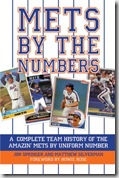 The last three years have been a major boon for the publication of significant baseball biographies featuring one of baseball’s most neglected positions- the catcher.
The last three years have been a major boon for the publication of significant baseball biographies featuring one of baseball’s most neglected positions- the catcher.
The much maligned defensive spot featuring the uniquely named tools of ignorance has come into its own since 2009. For that was the first year that launched a triple crown of baseball backstop biographies with the publication of The Life and Death of a Yankee Captain- the Biography of Thurman Munson by Marty Appel.
In 2010, another all- time Yankee and the subject of numerous books in the past Yogi Berra was covered in a very thorough and excellent biography- Yogi Berra- The Eternal Yankee by Allan Barra.
Now in 2011, completing the baseball biography trilogy of great backstops and not insignificantly the third player from New York, the Brooklyn Dodger great and Hall of Famer Roy Campanella is profiled. Neil Lanctot’s new biography called Campy The Two Lives of Roy Campanella (Simon and Schuster 2011 516 pages) came out in March and is a nice addition to anyone’s baseball shelf.
The two lives of Campanella refers to his life before and after his tragic automobile accident in early 1958 that nearly took his life but did leave him paralyzed, although the book spends relatively little time on that particular aspect of Campy’s life.
Since Campanella appeared to have had several contrasting phases in his life, the two lives might also have referenced his baseball life in the Negro Leagues (while still in high school at that) and his second life in the major leagues for the powerful Brooklyn Dodgers. Perhaps the two lives encompassed Campanella’s status as arguably becoming the most popular black superstar in baseball in the 1950’s after languishing in the shadow of his teammate the great Jackie Robinson for the early part of his career.
Whichever the case, I especially enjoyed Lanctot’s look at Campy’s early years in the Negro League with Baltimore and also his many winters in the Mexican League.
Lanctot also brought to life what to me was relatively unknown aspect of Campanella’s life, his on-going feud later in his career with his long time teammate and former good friend Jackie Robinson . Lanctot discovered that it’s really difficult to know the real Roy Campanella, since he made every effort to avoid any shred of controversy, unlike Jackie Robinson . Campanella’s failure to take a significant stand on race relations Lanctot intimates, may have been at the root of his disagreements with Robinson, although it is also suggested and possible that Jackie may have simply resented some of Campy’s growing popularity, once reserved for Robinson himself.
After Campanella’s tragedy, his upbeat personality and his love of and involvement in the game of baseball kept him in the public’s subconscious until his death in 1993. This three- time MVP should be remembered fondly as not just one of baseball’s all time great catchers but as one of baseball’s all time greats – period! Lanctot succeeds at doing just that.
Lanctot’s book should bring back fond memories for those who still remember those times as well as new insights into Campanella and his impact on the national pastime and Brooklyn baseball in the1940’s and 50’s





